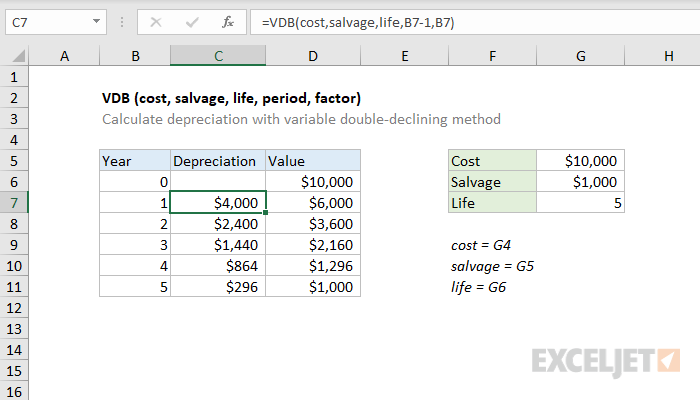Purpose
Return value
Syntax
=VDB(cost,salvage,life,start,end,[factor],[no_switch])- cost - Initial cost of asset.
- salvage - Asset value at the end of the depreciation.
- life - Periods over which asset is depreciated.
- start - Start period.
- end - End period.
- factor - [optional] Rate at which the balance declines. If omitted, defaults to 2.
- no_switch - [optional] Don't switch to straight line. Default is FALSE.
Using the VDB function
The VDB function returns the depreciation of an asset for a given period, using the double-declining balance method or another method specified by changing the factor argument. By default, the VDB function will switch to straight line calculation when the depreciation value calculated with straight line method is greater than the depreciation value calculated with the double decline balance method. VDB stands for variable declining balance.
In the example shown, the formula in C7, copied down, is:
=VDB(cost,salvage,life,B7-1,B7)
Notes
- The factor argument is optional and defaults to 2, which specifies the double-declining balance method used by the DDB function.
- You can change factor to another value to influence the rate of depreciation.
- The start and end arguments must use the same units as the life argument.
- If no_switch is omitted or FALSE, Excel will switch to straight-line depreciation when depreciation is greater than the declining balance calculation.
- If no_switch is TRUE, Excel will not switch to straight-line depreciation.












